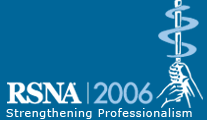
Abstract Archives of the RSNA, 2006
Yang Hou MD, Presenter: Nothing to Disclose
Yong Yue, Abstract Co-Author: Nothing to Disclose
Qiyong Guo MD, Abstract Co-Author: Nothing to Disclose
Zaiming Lu, Abstract Co-Author: Nothing to Disclose
Guoguang Fan PhD, Abstract Co-Author: Nothing to Disclose
The aim of this study is to evaluate the feasibility and value of detecting coronary artery lesions in pediatric patients with Kawasaki Disease (KD) using 64-slice computed tomography (CT).
Thirty-four pediatric patients (age from 7months - 16years, heart rate: 92±11bpm) underwent 64-slice CT coronary angiography. CTA was performed with a Somatom Sensation 64 (Siemens, Germany). “syngo Care Dose” technology was used to reduce radiation dose. 18 patients were examined with ultrasound (US) and 64-slice CT on the same day. In all cases the visibility of the coronary artery segments was recorded. The diameters of the LCA and RCA were measured in CTA and compared with US. The correlation coefficient of the dimension and the coincidence rate of the two methods were calculated.
Coronary artery lesions were found in 14 patients (22 branches) of the 34 cases with KD. On MSCT 6 cases were dilated, 3 cases were dilated with aneurysms, 2 cases had aneurysms without dilatation. One case showed a coronary artery stenosis, 2 cases showed calcifications. 3 cases had multiple aneurysms with the presence of stenosis showing the artery a bead-like. The correlation coefficients of LCA and RCA diameter in CTA and US were 0.85 and 0.91 (p<0.05) respectively. 3 coronary artery aneurysms in the distal RCA were missed by US. MSCT could not detect slight or moderate mitral regurgitation in 2 patients and arterial wall thickening in 5 patients.
MSCT was found to be an effective complementary or alternative method for US to evaluate coronary artery lesions non-invasively in pediatric patients with Kawasaki Disease.
MSCT is recommended as complementary, if not alternative, method to evaluate lesions of the coronary arteries in pediatric patients with Kawasaki Disease.
Hou, Y,
Yue, Y,
Guo, Q,
Lu, Z,
Fan, G,
Noninvasive Detection of Coronary Abnormalities in Pediatric Patients with Kawasaki Disease Using Multislice CT. Radiological Society of North America 2006 Scientific Assembly and Annual Meeting, November 26 - December 1, 2006 ,Chicago IL.
http://archive.rsna.org/2006/4439308.html

